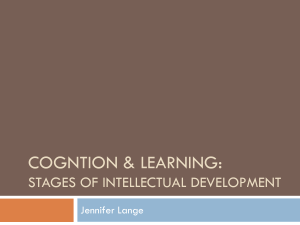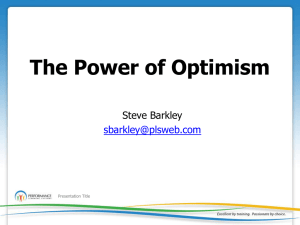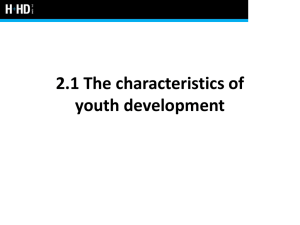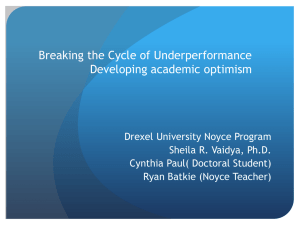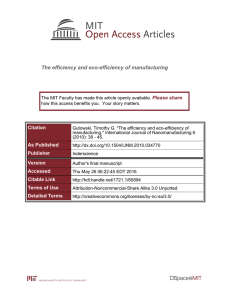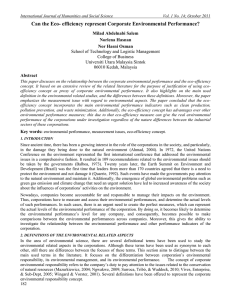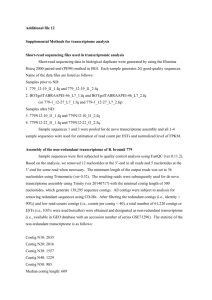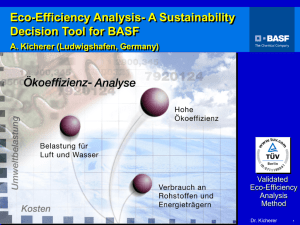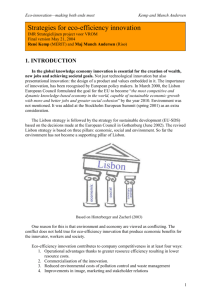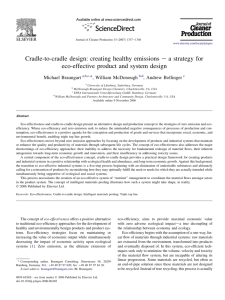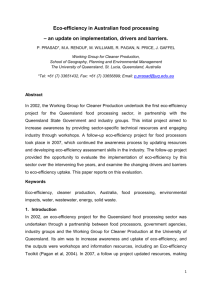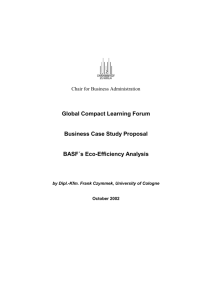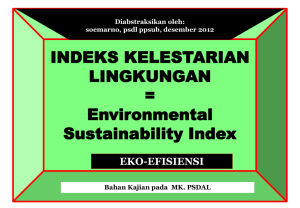1. Sustainable Development and Thecnology Optimism
advertisement
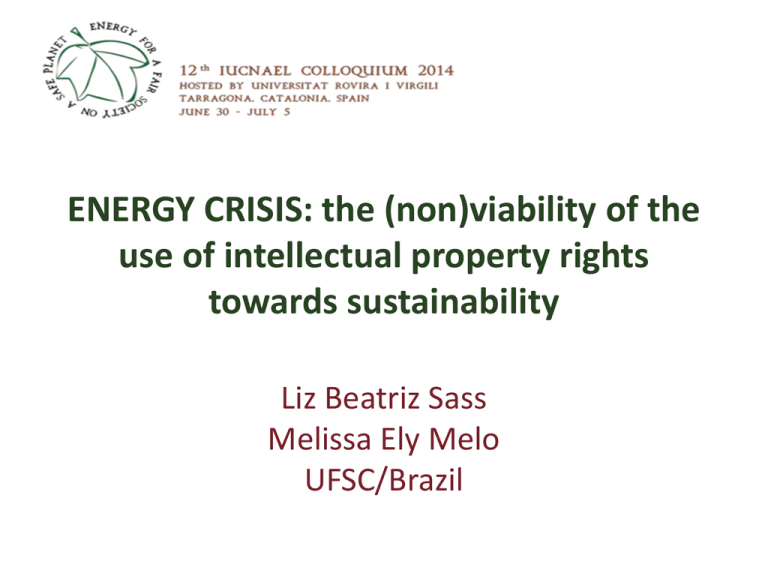
ENERGY CRISIS: the (non)viability of the use of intellectual property rights towards sustainability Liz Beatriz Sass Melissa Ely Melo UFSC/Brazil ABSTRACT 1. Sustainable optimism development and thecnology 2. Intellectual property rights and the green economy: eco-efficiency 3. Environmentally Sound Technologies (ESTs) and Intellectual Property Rights: main challenges 1.Sustainable Development and Thecnology Optimism • “Politics of consensus”: integrates the aspirations of different countries, people and social classes present in the "battlefield" that involves the appropriation of nature; • Intent to transform economic growth into “sustainable” through market mechanisms, assigning economic values and property rights to environmental services and natural resources. (LEFF, 2006, p. 137) 1.Sustainable Development and Thecnology Optimism SUSTAINABLE DEVELOPMENT The proposals can overcome the foundational contradiction of the capitalist system: the degrading appropriation of natural resources? 1. Sustainable Development and Thecnology Optimism • Environmental Crisis: presented as a result of not assigning property rights or attribution of “market values” to environmental goods and services; – Denies the fact of being an effect of capital accumulation; – Considers that market laws are sufficient to correct the ecological imbalances and social inequalities. (LEFF, 2006, p. 139) 1. Sustainable Development and Thecnology Optimism • THECNOLOGICAL OPTIMISM: – Goal: To provide economic growth as a sustainable process, based on the free market and technology. Not to internalize the ecological conditions of production; – Technology: Understood as the instrument for containing degradation effects. (LEFF, 2006, p. 143) 1. Sustainable Development and Thecnology Optimism • Criticism of the “Technology Optimism”: – 1) Introduction of New Pollutants brings future problems for the integrity of ecosystems; – 2) Low Impact of Innovation - profound changes in the economy’s structure require large-scale action; – 3) Does not minimize the use of energy, materials, production of waste and pollution; – 4) Does not consider all environmental costs intrinsic to the extraction, production, consumption and disposal of materials; (MONTIBELLER-FILHO, 2008, p. 257) 1. Sustainable Development and Thecnology Optimism • Energy crises – Population growth; expansion of industrial, commercial and agricultural are factors that increase energy consumption year after year; – The relation: production X consumption - considered in worrying levels due to the expected economic growth; – Even “clean” or “green” technologies have pros and cons in relation to economic, social and environmental issues. (CAVAGNOLI; MENEZES, 2012, 197; 199) Weak Sustainability 2. Intellectual property rights and the green economy: eco-efficiency • Green Economy: eco-efficiency and technology will allow an acceleration of growth, ensuring a high standard of consumption for all, reducing poverty, reducing the anthropogenic impact on the environment and allowing the creation of green jobs. 2. Intellectual property rights and the green economy: eco-efficiency PNUMA – 2008 – Green Economy and Sustainable Development. ECO-EFFICIENCY – sustainable technologies GREEN CONSUMPTION GREEN JOBS 3. Environmentally Sound Technologies (ESTs) and Intellectual Property Rights: main challenges • What does ESTs mean? – Environmentally Sound Technologies (ESTs) encompass technologies that have the potential for significantly improved environmental performance relative to other technologies. Broadly speaking, these technologies: • • • • • * Alternative Energy * Energy Conservation * Nuclear energy protect the environment; are less polluting; use resources in a sustainable manner; recycle more of their wastes and products; handle all residual wastes in a more environmentally acceptable way than the technologies for which they are substitutes. (Agenda 21) 3. Environmentally Sound Technologies (EST) and Intellectual Property Rights: main challenges – Why is it convenient to use the IPR to EST? • To attract investment in manufacturing and marketing (usually green technology is costly, with unpredictable results). • It is the best way to force" TT. Patents Industrial Design Trademarks 3. Environmentally Sound Technologies (EST) and Intellectual Property Rights: main challenges • "Groups of patents", "common" patents, cross-licensing, standardization agreements... • Complex technologies: different technology sectors; • The disagreement over the role of IP and patents EST for TT in developing countries. 3. Environmentally Sound Technologies (EST) and Intellectual Property Rights: main challenges Conclusions: • Intellectual property rights are instruments that can contribute to the promotion of eco-efficiency with regard to overcoming the energy crisis, but only from the perspective of weak sustainability. • Considering this perspective (weak sustainability) the intellectual property rights must still overcome several challenges in relation to ESTs, especially with regard to technology transfer, to thereby minimally contribute to eco-efficiency.




